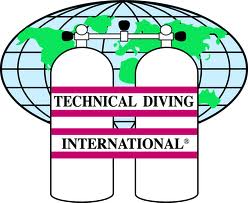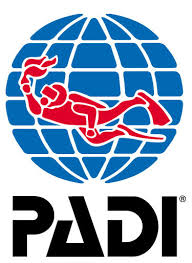MIOWN (also known as the cement wreck).
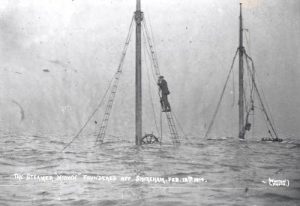
This wreck of the Miown lies directly south off Shoreham Harbour about 1.5 miles out. Lying in a maximum of 10-12 metres at high tide, this wreck has recently started to uncover again after many years of being hidden in the sand. Sunk in 1914 in a gale, she was carrying a cargo of cement (hence her other local name). All her crew perished when abandoning ship due to the icy February waters, but the captain remained onboard, clinging to her mast until rescued.
Her cargo can still be seen today, albeit solidified into lumps of rock! The most prominent part is her large boiler which stands proud about 2 metres. There are also quite a few of her ribs to be seen now, including the lifeboat davits sticking out at 45 degrees.
Fish life on this wreck is again prolific. In summer, shoals of bib appear as a cloud, constantly checking the divers out who visit their home! This site is excellent as a night dive in good visibility, with lots of crabs coming out at night to mate and eat, and cuttlefish virtually guaranteed. Some very large wrasse can also be seen in summer skirting around. Towards the bow section, away from the main wreckage is a large anchor, not associated with the actual wreck.
Clodmore
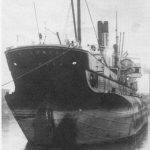
The Clodmore was a 3,753 ton armed merchantman, 243ft long with a beam of 47ft. She was torpedoed on the 3rd May 1917. Today the wreck lays out on the seabed in a depth of 28mtrs, HW. The bows stand proud then she disappears into the seabed before reappearing all twisted with her stern upside down. A big wreck but a lot of it is buried under the sand, so you never quite know what you will see from one year to the next as the sands shift
Fortuna

This Dutch Steamship of 1.254 tons was 270ft long and had a beam of 36ft, she struck a mine on the 22nd October 1916, 15 of her crew were killed. Today the wreck of the Fortuna lays 8 miles to the SE of Brighton and rests in a depth of 32mtrs. She is upright & still intact, although all the superstructure has now collapsed down.
She was holed in the stern & it is possible to enter the hull from here, infact there are now large access areas along the whole length of the ship but take care as it is quite a silty wreck. In the holds you can see some of the general cargo she was carrying and the bags of cement encrusted to the hull.
Duke of Buccleugh
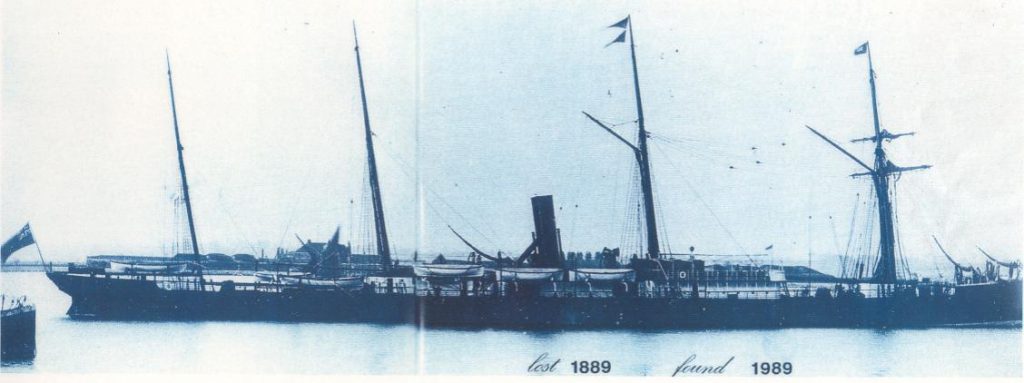
The Duke of Buccleugh was a 4 masted Iron steamer built 1874. She was 380ft long and 38ft wide. And was driven by her 500hp engines. She was sunk in collision with the Vandalia during the night of the 7th March 1889, the captain of the Vandalia always claimed it was the fault of the Duke but dives since have proven other wise.
The wreck today rests in 58mtrs of water and stands 8mtrs proud of the seabed, she is still in pretty good shape for her age and it is possible navigate your way around this wreck, there are easy access holes to her holds and you can see some of the 600 tons of hand painted china that she was carrying. Visibility is usually excellent in this area.
TR Thompson
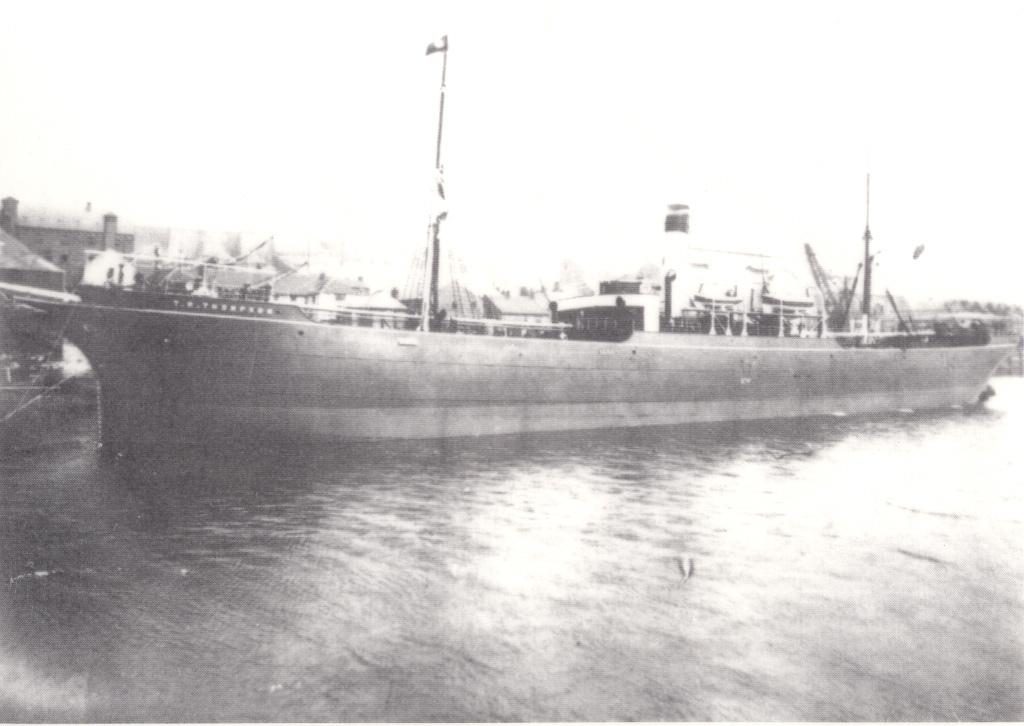
TR Thompson was a 3,538ton armed merchantman, she was built in 1897 and was 360ft long with a beam of 47ft. She was armed with a 4.7in gun which was mounted on stern. Her engine was a 301hp triple expansion engines and her cargo was 5.600 tons iron ore. She was sunk on the 29th March 1918 by a single torpedo from UB57, it struck her on the nose and opened her up like a tin can, she sank in minutes, killing 33 of her crew, only 3 survived.
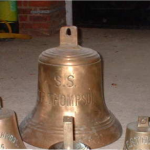
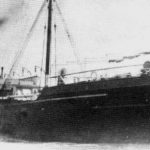 Today the wreck of the TR Thompson sits upright with her bows pointing to the east and partially buried, her superstructure has collapsed down but as you get to the stern, it sits high about 7mtrs off the seabed. The gun has now fallen backwards and down to the seabed, shell cases lay in the wreckage all fused together. Plenty of fish on this one.
Today the wreck of the TR Thompson sits upright with her bows pointing to the east and partially buried, her superstructure has collapsed down but as you get to the stern, it sits high about 7mtrs off the seabed. The gun has now fallen backwards and down to the seabed, shell cases lay in the wreckage all fused together. Plenty of fish on this one.
CITY OF WATERFORD
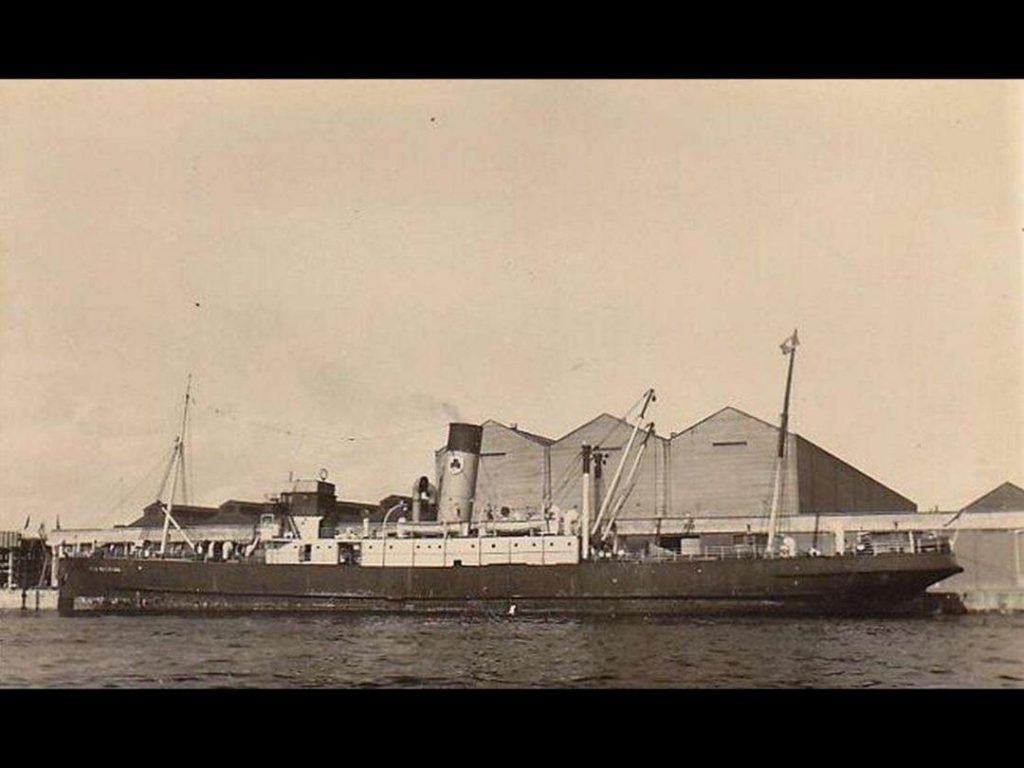
City of Waterford makes for a spectacular wreck dive. This 1,334-ton British Steamer was built in 1921 at the Caldon Ship & Engineering Works in Dundee, originally called the Skerries 2 she was 270ft in length & had a beam of 37ft was driven by a three-cylinder triple-expansion engine. She worked the route from Liverpool to Waterford carrying passengers & general cargo to and from Ireland.
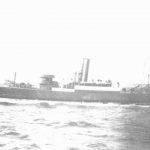 Her history is quite colourful, including action during WWII in the Irish Sea. A Nazi plane engaged her in a running battle whilst carrying a full cargo of cattle, and was eventually brought down by the lucky ship! Her captain received an MBE for this action.
Her history is quite colourful, including action during WWII in the Irish Sea. A Nazi plane engaged her in a running battle whilst carrying a full cargo of cattle, and was eventually brought down by the lucky ship! Her captain received an MBE for this action.
She continued operating after the war as a cargo ship & it was on the 14th April 1949 when the City of Waterford was heading down channel from Antwerp to Cork when she ran into thick fog to the west of Beachy Head. Unfortunately for the City coming from the opposite direction was the very large steamer the Marpessa a 5,500-ton Greek steamer and the collision swiftly sent the City of Waterford to the bottom.
Still recognizable as a ship-shape wreck, her stern & bow sections are upright and still fairly intact, but the mid-section is badly broken. Sitting on a sand scour in 30metres, she is an impressive sight when you sit on the seabed looking up at the bow with her anchors in place. Fish life includes the normal dense shoals of bib, pollack, wrasse, bass, conger eels, lobster & edible crabs. She is covered in Dead Mans Fingers and many species of anemones & on the seabed around the wreck Scallops can be found..
RMS MOLDAVIA
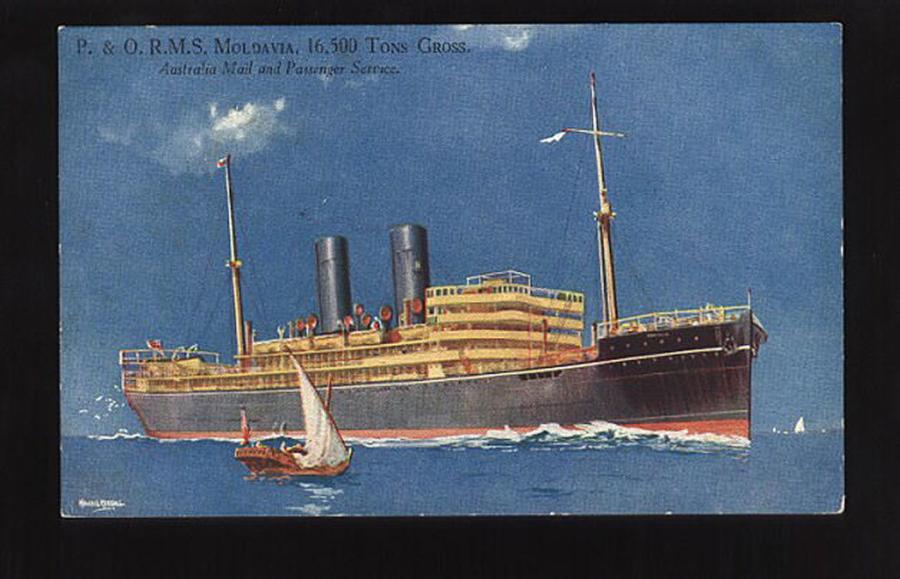
RMS Moldavia one of the finest wreck dives on the south coast. This P&O liner was requisitioned by the admiralty as an armed merchant cruiser in the first world war, she was being used to carry American servicemen to the UK & to war. This monster of a ship weighed in at 9,505 tons and a massive 521ft long with a beam 58ft.
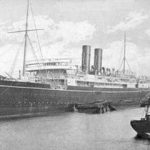 On 23rd May 1918 the RMS Moldavia was torpedoed by the German sub UB57, 57 Americans died as a result of the sinking. The wreck of the RMS Moldavia lies in 49mtrs of water at low tide, she lays on her port side and has a couple of breaks along her hull & as you make your way along towards the bows, the bows are more upright with a 45degrees list. She has some big guns on her as well which are easily identified and shell cases lay on the seabed. There are rows & rows of portholes all along her stbd side, some are open & some are closed. This wreck is 30miles from Brighton so expect a 2 hour+ journey but its well worth it as the vis can be exceptional.
On 23rd May 1918 the RMS Moldavia was torpedoed by the German sub UB57, 57 Americans died as a result of the sinking. The wreck of the RMS Moldavia lies in 49mtrs of water at low tide, she lays on her port side and has a couple of breaks along her hull & as you make your way along towards the bows, the bows are more upright with a 45degrees list. She has some big guns on her as well which are easily identified and shell cases lay on the seabed. There are rows & rows of portholes all along her stbd side, some are open & some are closed. This wreck is 30miles from Brighton so expect a 2 hour+ journey but its well worth it as the vis can be exceptional.
The wreck of the RMS Moldavia has been designated a protected shipwreck and divers are not permitted to remove any artefacts from the wreck.
HMHS WARILDA
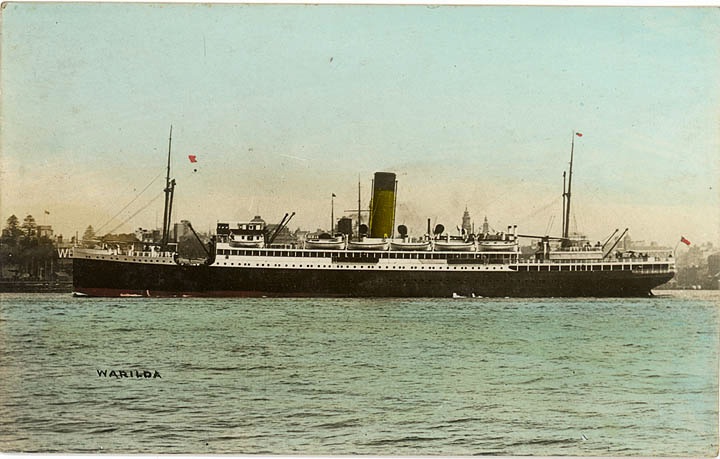
The Warilda was an Australian steamer, built for the Adelaide Steamship Company in 1907 by W. Beardmore & Co Ltd on the clyde at Glasgow. She was over 411ft in length had a beam of almost 57ft & a draft of 34ft. Powered by her quadruple-expansion engines giving her a speed of 16knots.
Requisitioned by the British Government the Warilda was put to use as a troopship during the First World War & was armed with a 4inch rapid fire gun on her stern. After several voyages the Warilda was fitted out as a hospital ship and served the Southampton – Le Havre route.
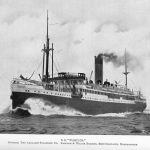 On the 3rd August 1918 when returning from France loaded with wounded she was torpedoed mid-channel some 36miles South of Brighton. The Warilda did not sink straight away but remained afloat for several hours allowing time to evacuate some 678 wounded & ships crew including the commander, Captain Simm. However when she did slip below the surface she took with her 123 persons, for his actions in saving so many lives Captain Simm was decorated with an O.B.E.
On the 3rd August 1918 when returning from France loaded with wounded she was torpedoed mid-channel some 36miles South of Brighton. The Warilda did not sink straight away but remained afloat for several hours allowing time to evacuate some 678 wounded & ships crew including the commander, Captain Simm. However when she did slip below the surface she took with her 123 persons, for his actions in saving so many lives Captain Simm was decorated with an O.B.E.
Today the wreck of HMHS Warilda lays on the seabed some 49mtrs below the surface at low water, she rests on her stbd side at 45degrees and is very much intact. This monster wreck is an awesome sight with great areas to explore, especially around the stern with it’s large open spaces & huge rudder and 4inch gun sitting upright on its pedestal on the seabed. With huge shoals of fish decorating the wreck this is a divers dream and should definitely be on every divers list.








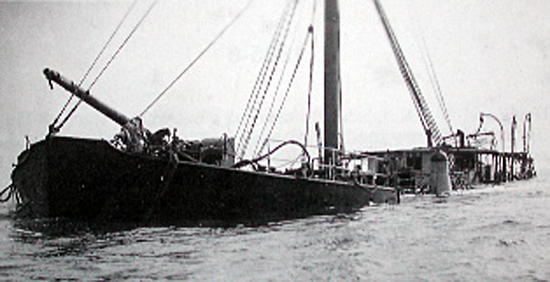






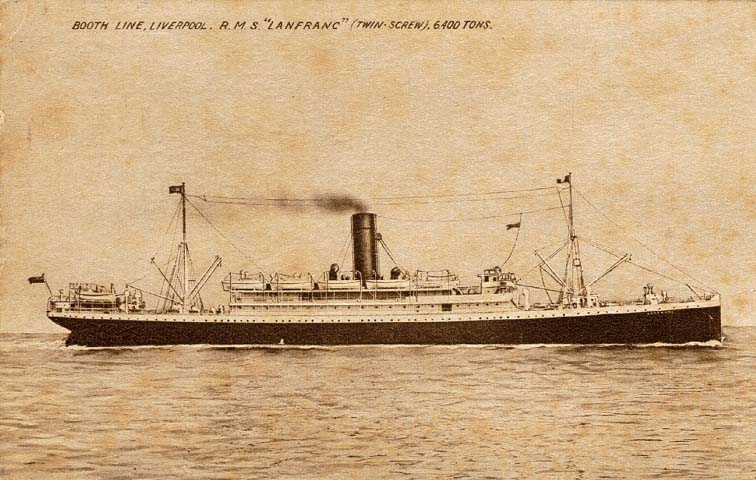
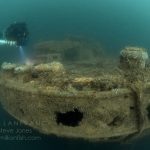


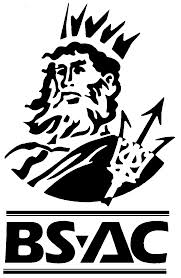
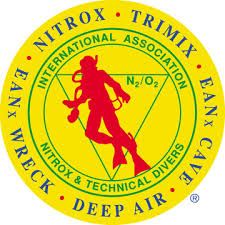
![images[3]](https://www.channeldiving.com/wp-content/uploads/images31.jpg)

